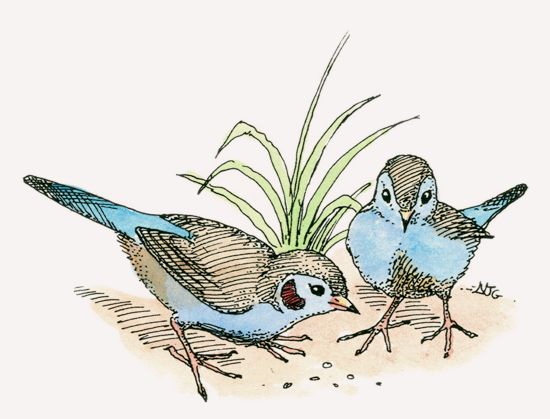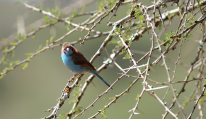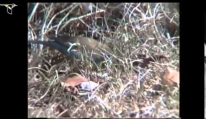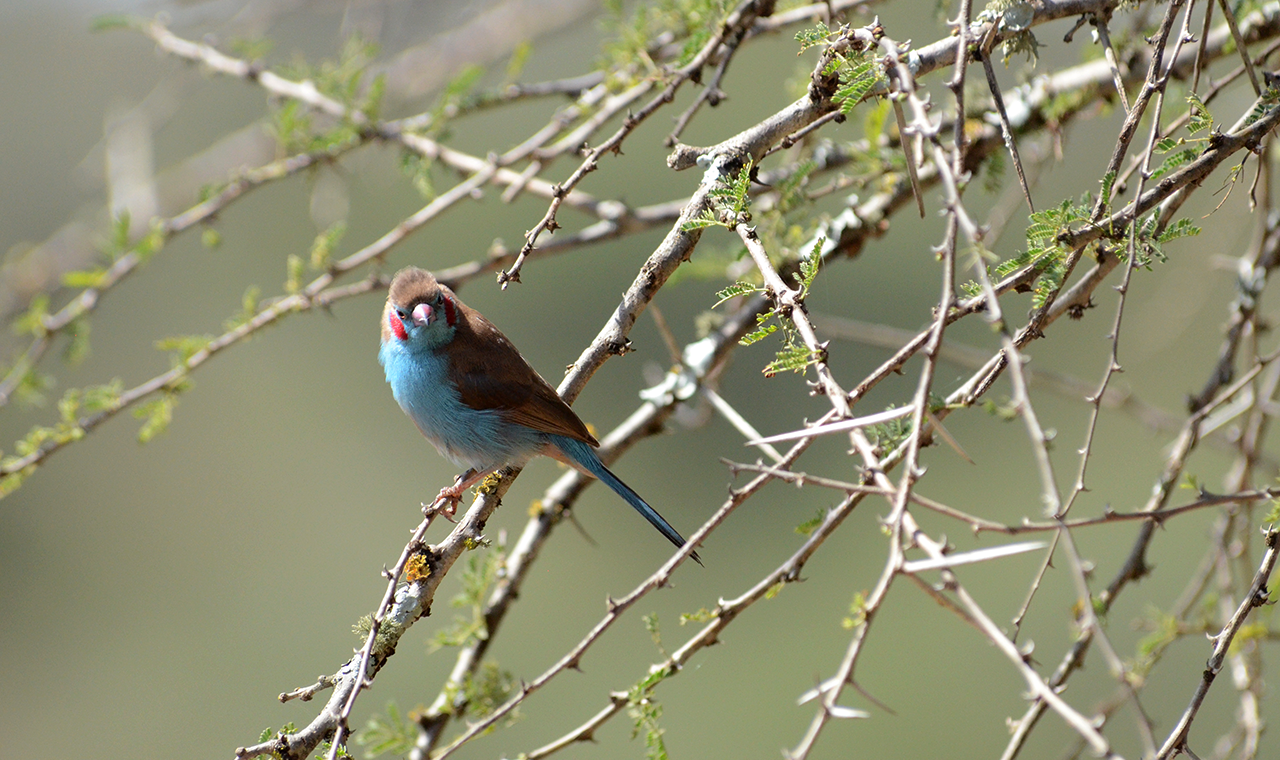Social Structure
Except when they live in pairs during the breeding season, cordon-bleus are usually found in bands.
Communication
The red-cheeked cordon-bleu’s contact call is a high-pitched siii siii. The bird’s complex song is composed of several high-pitched notes.
Behavior
Red-cheeked cordon-bleus spend most of their time hopping around in search of seeds or grain.
Diet
Red-cheeked cordon-bleus feed on grass seeds and other small seeds along with farm-grown millet. They also eat beeswax.
Breeding
A pair of red-cheeked cordon-bleus builds a round, grass-stem nest with a side entrance, often in a protective thorn bush. The female lays three to six eggs, which are incubated for about 11 days. The young fledge in 17 to 19 days.
Friends & Foes
Larger grain-eaters, such as pin-tailed whydahs, chase cordon-bleus from prime foraging sites.
Population in Kenya
Red-cheeked cordon-bleus are found in Kenya’s southern bush lands, woods, and suburban gardens below 7,545 feet (2,300 m). They are rarely seen in the northern half of the country.
Range & Habitat
Red-cheeked cordon-bleus are small finches that inhabit dry regions of sub-Saharan Africa. They prefer grasslands, savannas, bush, or wooded areas.





